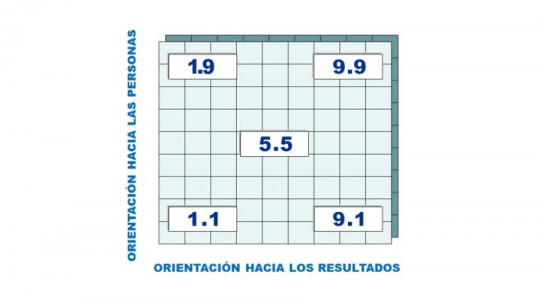Although from the outside it may seem that companies are all organized in the same way, the truth is that there are different types of structures depending on the size and the activities carried out in them.
Some may be more hierarchical, with managers in charge of different departments who, in turn, have other managers in charge of reporting everything that is done in them. Others, however, can completely dispense with that hierarchy and could even say that there is no management at all.
There are different types of organizational systems, each with its peculiarities and suitability depending on the case Next we are going to discover them.
What is the organization system of a company?
Organization systems are the structures on which organizations are configured. These types of structures define how each division of a company is made up, the hierarchy of who reports to whom and how communication flows at different levels of the organization. With a well-defined organizational system, all workers know what is expected of them and to whom they must report since the hierarchy is well defined and there is fluidity in the communication of the different levels.
There are several types of organizational systems that, although there are those who believe that some are better than others, the truth is that in the workplace each one adapts better to the organization depending on the activities carried out in it, its size. and other factors.
Having a well-defined organizational system provides many benefits, including better efficiency, higher productivity, and smooth decision making which is why it is necessary to know and choose the most appropriate organization system for each case.
Types and characteristics of organizational systems
As we said, there are different types of organizational systems, some more suitable than others depending on the characteristics of the organization. Here we see the main types that exist, in addition to giving some real-life examples.
1. Functional system
Various specialized departments, such as sales, finance, and operations, are found in the functional system. At the top of the departmental hierarchy is a manager who oversees all departments.
The communication flow is quite clear and basic, since Each employee is responsible for informing or reporting their activities to their boss In turn, the heads of each department report to senior management, that is, the manager who supervises the entire structure.
As the organization is segmented into specialized departments, its workers also specialize , which contributes to a very well-established path towards its growth. As each employee is very clear about what he has to do and does not go beyond his scope of intervention, there is no room for ambiguity.
However, just as this structure has these advantages, it has the main drawback that interdepartmental communication is complicated , in many cases non-existent since everyone reports upwards. The negative consequence of this is that the sharing of ideas is infrequent, except when senior management intervenes.

2. Divisional system
In the divisional system The organization is divided into work teams, each working on different projects Many different types of equipment can be included in this type of organizational system.
The teams are created on purpose, thinking about addressing specific and significant projects for the performance and progress of the company. For example, a car company could have different separate teams, each dedicated to developing a different car model.
Each project team receives the supervision of a director, but also has autonomy within the organization Thanks to the fact that each work team is dedicated exclusively to its project, employees can become deeply familiar with the work of their team.
However, the weak point of this type of organization is very similar to that of the functional system. The divisions of the organization are fully aware of the work of their colleagues within the project team, but they do not know what the other teams do nor is there usually communication between them.
3. Matrix system
The matrix system is a combination of the two previous systems. The business system It is configured as a functional one from above, that is, having a traditional hierarchy and with specialized departments
However, when we put the magnifying glass on the departments we can see that each of them is organized divisionally, with different teams in charge of carrying out different projects.
This system is complex, so It requires a lot of planning in addition to developing fluid and fast internal communication to avoid any misunderstanding but thanks to its complexity, many problems associated with the divisional and functional modalities are eliminated.
This type of organization allows communication to reach the right people and at the right time. Workers receive information quickly, thus increasing productivity , in addition to the fact that all parts of the company are communicated with each other, it allows holistic thinking thanks to the fact that all teams know what the others do. Added to this, cross-collaboration is encouraged.
However, a problem may arise associated with this type of structure. Although there is a certain hierarchical structure, from the bottom up, the fact that all those involved are interconnected can bring with it the inconvenience that one does not know very well who one has to report to when a certain task is carried out.
4. Flat system
Finally, we have the flat system in which, as its name suggests, it “flattens” a large part of the hierarchy, making workers enjoy greater autonomy. Although they may have formal structures, in companies with a flat organizational system, work is usually divided by setting up temporary work teams
One should not think that in this system there is no hierarchy at all. There are still employers and employees, since there are still senior managers who run the operation. However, this system tries to completely avoid traditional hierarchical structures, which have often been associated with communication problems.
In the flat system this is avoided, and in fact there is a significant increase in communication between teams, eliminating communication problems that can occur when messages travel through a hierarchical structure that is too extensive but confusing.
But although it has its advantages and many consider it the ideal system for every company, In practice the flat system cannot be applied in large organizations
This system is difficult to maintain when the company grows and needs more structured and, therefore, hierarchical communication systems. Additionally, workers in this type of organization may feel overwhelmed by having to do too many different tasks and not have much chance of being promoted.









